Heat treatment of steel consists of normalizing, annealing, tempering and quenching. Among them, annealing and normalizing are mainly used for preparatory heat treatment, and are only used as final heat treatment when the performance of the workpiece is not required. The purpose of quenching is to obtain martensitic organization and improve the performance of steel. Tempering is mainly to reduce or eliminate quenching stresses, to prevent deformation or cracking, while obtaining the required mechanical properties.
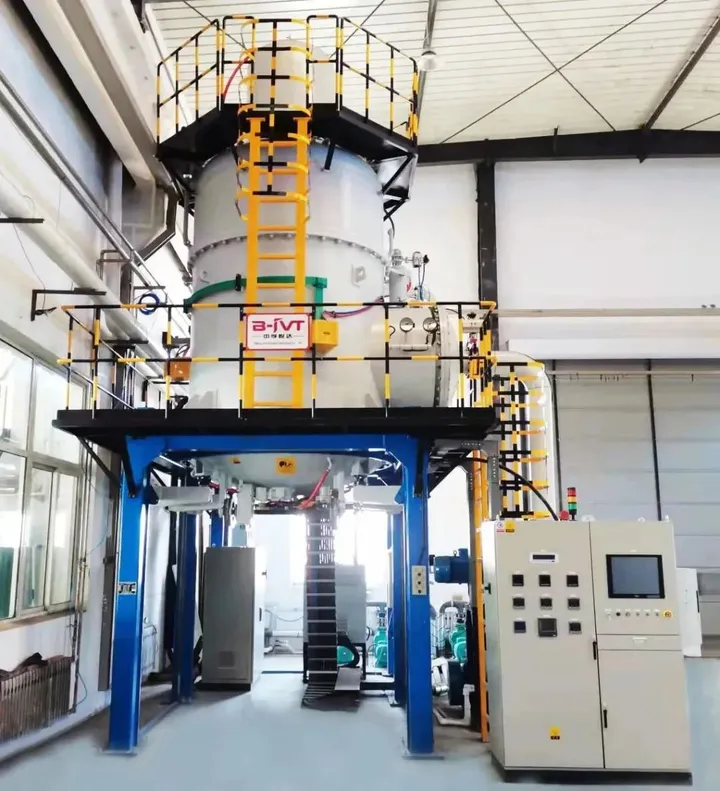
Quenching of steel is to heat the steel to the critical temperature Ac3 (sub-eutectic steel) or Ac1 (over-eutectic steel) above the temperature, hold for a period of time, so that all or part of the austenitization, and then faster than the critical cooling rate of the cooling rate of the fast cooling to the Ms below (or Ms isothermal near) for the transformation of martensite (or bainite) heat treatment process. It is also commonly referred to as quenching as a solution treatment or heat treatment process with rapid cooling of materials such as aluminum alloys, copper alloys, titanium alloys, tempered glass, etc.
(1) To improve the mechanical properties of finished metal materials or parts. For example, to improve the hardness and wear resistance of tools, bearings, etc., to improve the elastic limit of springs, and to improve the overall mechanical properties of shaft parts.
(2) improve the material properties or chemical properties of some special steel. Such as improving the corrosion resistance of stainless steel, increase the permanent magnetism of magnetic steel. Quenching and cooling, in addition to the need for a reasonable choice of quenching medium, but also the correct quenching method, commonly used quenching methods, mainly single-liquid quenching, dual-liquid quenching, graded quenching, isothermal quenching, local quenching and so on.
① obtained martensite, bainite, residual austenite and other unbalanced (that is, unstable) organization.
② the existence of large internal stress.
③ mechanical properties can not meet the requirements. Therefore, steel workpiece quenching generally have to go through the tempering
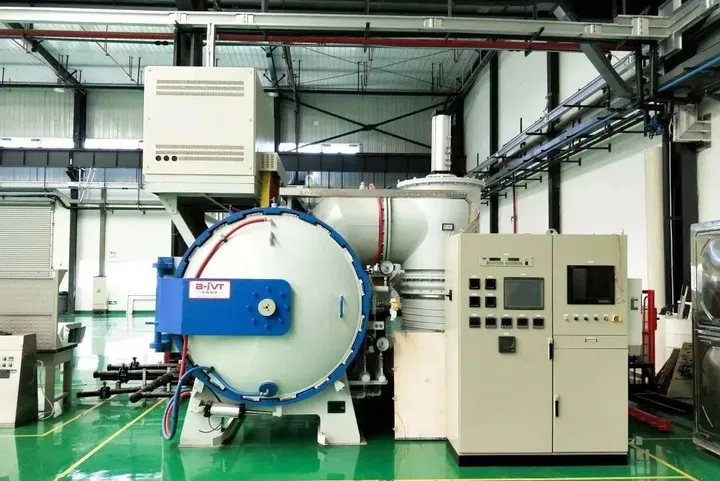
Tempering is the quenched metal material or parts heated to a certain temperature, held for a certain period of time, cooled in a certain way of heat treatment process, tempering is quenched immediately after an operation, usually is the last process of heat treatment of the workpiece, and thus the quenching and tempering of the joint process known as the final treatment. 2.
(1) Reduce internal stress and reduce brittleness, quenched parts exist a great deal of stress and brittleness, such as not timely tempering often produce deformation or even cracking.
2) adjust the mechanical properties of the workpiece, workpiece quenching, high hardness, brittleness, in order to meet the different performance requirements of various workpieces, can be adjusted by tempering, hardness, strength, plasticity and toughness.
(3) Stabilize the size of the workpiece. By tempering can make the metallurgical organization tends to stabilize, in order to ensure that no further deformation in the future use of the process.
(4) Improve the cutting performance of certain alloy steels.
① improve the stability of the organization, so that the workpiece in the use of the process no longer occurs in the organization of the transformation, so that the workpiece geometry and properties remain stable.
② eliminate internal stresses, in order to improve the performance of the workpiece and stabilize the workpiece geometry.
③ adjust the mechanical properties of steel to meet the requirements of use.
Tempering has these effects, because when the temperature rises, the atomic activity ability to enhance the iron, carbon and other alloying elements in the steel atoms can be faster diffusion, atomic rearranging combinations, so that the unstable imbalance of the organization is gradually transformed into a stable equilibrium organization. The elimination of internal stress is also related to the reduction of metal strength at elevated temperatures. Generally when steel is tempered, hardness and strength decrease and plasticity increases. The higher the tempering temperature, the greater the change in these mechanical properties. Some alloy steel with high alloy element content, when tempered at a certain temperature range, will precipitate some fine-grained metal compounds, so that the strength and hardness rise. This phenomenon is called secondary hardening.
Tempering requirements: workpieces for different purposes should be tempered at different temperatures to meet the requirements in use.
① Cutting tools, bearings, carburized quenched parts, surface quenched parts are usually tempered at a low temperature below 250℃. Low-temperature tempering after the hardness change is not significant, the internal stress is reduced, the toughness is slightly improved.
② springs tempered at 350 to 500 ℃ at medium temperature, can obtain high elasticity and necessary toughness.
③ medium-carbon structural steel made parts are usually tempered at 500 ~ 600 ℃ for high temperature, in order to obtain the appropriate strength and toughness of a good match.
Steel tempered at about 300 ℃, often making it more brittle, this phenomenon is called the first type of tempering brittleness. Generally should not be tempered in this temperature range. Certain medium carbon alloy structural steel tempered at high temperatures, if slowly cooled to room temperature, but also easy to become brittle. This phenomenon is known as Type II temper embrittlement. The addition of molybdenum to the steel, or cooling in oil or water during tempering, can prevent Type II temper embrittlement. The second type of temper brittleness of steel reheating to the original tempering temperature, you can eliminate this brittleness. In production, often according to the requirements of the workpiece properties. According to the different heating temperatures, the tempering is divided into low-temperature tempering, medium-temperature tempering, and high-temperature tempering. Quenching and subsequent high-temperature tempering combined heat treatment process known as tempering, that is, in a high degree of strength at the same time, but also good plastic toughness.
(1) low-temperature tempering: 150-250 ℃ , M back, reduce internal stress and brittleness, improve the plastic toughness, high hardness and wear resistance. Used in the production of gauges, cutting tools and rolling bearings.
(2) medium temperature tempering: 350-500 ℃, T back, with high elasticity, a certain degree of plasticity and hardness. Used for making springs, forging molds, etc.
(3) high temperature tempering: 500-650 ℃, S back, with good overall mechanical properties. Used for making gears, crankshafts, etc.
Normalizing is a heat treatment to improve the toughness of steel. The steel components will be heated to the Ac3 temperature above 30 ~ 50 ℃, hold a period of time out of the air-cooled. The main feature is that the cooling rate is faster than annealing and lower than quenching, normalizing can be slightly faster cooling in the crystalline grain refinement of steel, not only to get satisfactory strength, but also can significantly improve the toughness (AKV value), reduce the tendency to cracking components. Some low alloy hot rolled steel plate, low alloy steel forgings and castings by normalizing treatment, the comprehensive mechanical properties of the material can be greatly improved, but also improved cutting performance.
① eutectic steel, normalizing to eliminate casting, forging, welding pieces of superheated coarse crystalline organization and Wei's organization, rolled material in the banded organization; grain refinement; and can be used as a quenching before the pre-heat treatment.
② eutectic steel, normalizing can eliminate the network of secondary carburization, and pearlite refinement, not only to improve the mechanical properties, but also conducive to the subsequent spherical annealing.
③ low carbon deep-drawn thin steel plate, normalizing can eliminate free carburization of grain boundaries to improve its deep-drawn properties.
④ low carbon steel and low carbon low alloy steel, the use of normalizing, you can get more fine flake pearlitic organization, so that the hardness increased to HB140-190, to avoid cutting the "sticky knife" phenomenon, improve the cutting processability. For medium carbon steel, in both available normalizing and annealing occasions, with normalizing is more economical and convenient.
⑤ for ordinary medium-carbon structural steel, in the mechanical properties required for the occasion is not high, can be used instead of quenching quenching and high-temperature tempering, not only easy to operate, but also to make the organization of steel and dimensional stability.
⑥ High-temperature normalizing (Ac3 above 150 ~ 200 ℃) due to the high temperature diffusion rate is higher, can reduce the composition of castings and forgings segregation. High-temperature normalizing after the coarse grains can be refined through the subsequent second lower temperature normalizing.
(7) for some of the turbine and boiler for low and medium carbon alloy steel, often using normalizing to obtain the bainite organization, and then by high-temperature tempering, for 400 ~ 550 ℃ with good creep resistance.
⑧ In addition to steel parts and steel, normalizing is also widely used in ductile iron heat treatment, so that it obtains pearlite matrix, improve the strength of ductile iron.
Because of the characteristics of normalizing air cooling, and therefore the ambient air temperature, stacking mode, airflow and workpiece size on the organization and properties after normalizing have an impact. Normalized organization can also be used as a classification method for alloy steel. Usually according to the diameter of 25 mm specimen heated to 900 ℃, air cooling of the organization, the alloy steel is divided into pearlite steel, bainitic steel, martensitic steel and austenitic steel.
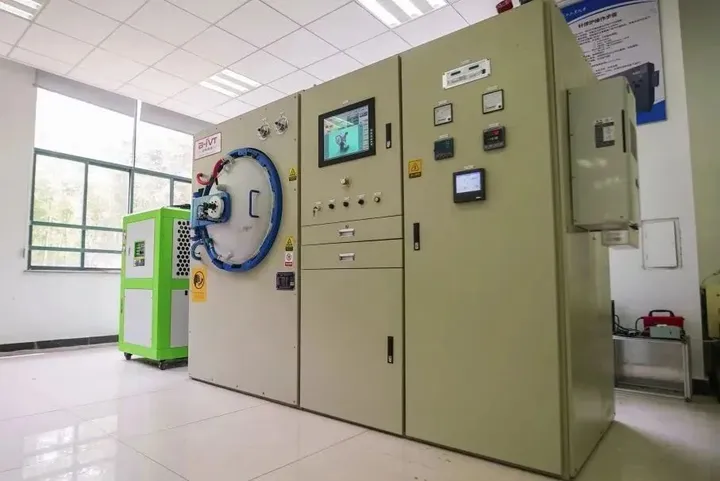
Annealing is a metal heat treatment process in which the metal is slowly heated to a certain temperature, held for a sufficient period of time, and then cooled at a suitable rate. Annealing heat treatment is divided into complete annealing, incomplete annealing and stress relief annealing. The mechanical properties of annealed materials can be detected by tensile tests and also by hardness tests. Many steel is annealed heat treatment state supply, steel hardness test can be used Rockwell hardness tester, test HRB hardness, for thinner steel plate, steel strip and thin-walled steel pipe, you can use the surface Rockwell hardness tester, test HRT hardness.
① improve or eliminate the steel in the casting, forging, rolling and welding process caused by a variety of organizational defects, as well as residual stress, to prevent the workpiece deformation, cracking.
② soften the workpiece for cutting.
③ refine the grain, improve the organization to improve the mechanical properties of the workpiece.
④ For the final heat treatment (quenching, tempering) to prepare the organization.
① complete annealing. Used to refine the medium and low carbon steel by casting, forging and welding after the mechanical properties of poor coarse superheated organization. The workpiece will be heated to ferrite all transformed into austenite temperature above 30 ~ 50 ℃, hold for a period of time, and then slowly cooled with the furnace, the austenite in the cooling process to transform again, you can make the organization of the steel fine.
② spheroidal annealing. Used to reduce the high hardness of tool steel and bearing steel after forging. The workpiece will be heated to the steel began to form austenite temperature above 20 ~ 40 ℃, insulation and slow cooling, in the cooling process of pearlite in the lamellar carburite into spherical, thus reducing the hardness.
③ Isothermal annealing. Used to reduce the high hardness of certain alloy structural st eel with high nickel and chromium content for CNC milling machining. Generally first cooled to the austenite at a faster rate to the most unstable temperature, insulation for an appropriate period of time, the austenite transformation to tosite or sostenite, the hardness can be reduced.
④ recrystallization annealing. Used to eliminate metal wire, sheet in the cold drawing, cold rolling process of hardening phenomenon (hardness increases, plasticity decreases). The heating temperature is generally 50-150 ℃ below the temperature at which the steel starts to form austenite, and only in this way can the hardening effect be eliminated so that the metal can be softened.
⑤ Graphitization annealing. ⑤ Graphitization annealing. This is used to transform cast iron containing a large amount of carburization into malleable cast iron with good plasticity. Process operation is the casting is heated to about 950 ℃, insulation for a certain period of time after appropriate cooling, so that the decomposition of carburization to form a flocculent graphite.
⑥ diffusion annealing. Used to make the chemical composition of alloy castings uniform, improve its performance. Method is not melting under the premise that the casting is heated to the highest possible temperature, and a long period of heat preservation, to be a variety of elements in the alloy diffusion tends to be uniformly distributed after slow cooling.
(7) stress relief annealing. Used to eliminate the internal stress of steel castings and weldments. For iron and steel products begin to form austenite after heating the temperature below 100 to 200 ℃, insulation and cooling in the air, you can eliminate internal stress.
The above is the knowledge of metal heat treatment science, if you need metal heat treatment processing, you can Richconn, Richconn was founded in 2008, is a precision manufacturing company, we can provide heat processing treatment of metal, CNC machining services, surface finishing services, sheet metal services, quickly contact us for a quote!
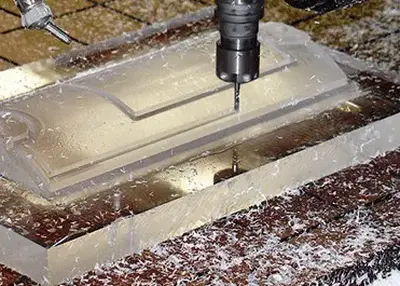 Unlocking Creativity: Exploring the World of CNC Acrylic MachiningNovember 15, 2023Welcome to the realm where precision meets creativity, where the art of CNC (Computer Numerical Control) technology converges with the transparent beauty of acrylic. In this journey, we will delve into the intricate world of CNC Acrylic machining, unveiling its applications, design inspirations, material synergies, and real-world case studies.view
Unlocking Creativity: Exploring the World of CNC Acrylic MachiningNovember 15, 2023Welcome to the realm where precision meets creativity, where the art of CNC (Computer Numerical Control) technology converges with the transparent beauty of acrylic. In this journey, we will delve into the intricate world of CNC Acrylic machining, unveiling its applications, design inspirations, material synergies, and real-world case studies.view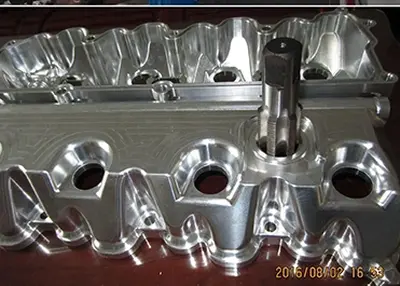 Machining Must Know the BasicsOctober 30, 2023The common forms of failure of mechanical parts are fracture, plastic deformation, excessive elastic deformation, excessive wear or damage to the working surface, the occurrence of strong vibration, the loosening of the coupling, friction drive slippage and so on.view
Machining Must Know the BasicsOctober 30, 2023The common forms of failure of mechanical parts are fracture, plastic deformation, excessive elastic deformation, excessive wear or damage to the working surface, the occurrence of strong vibration, the loosening of the coupling, friction drive slippage and so on.view Electrophoresis Metal Coating in Laboratory AutomationFebruary 29, 2024Navigating Precision in Laboratory AutomationIn the dynamic landscape of scientific research, the central axis of efficiency revolves around laboratory automation. At the nucleus of this efficiency li...view
Electrophoresis Metal Coating in Laboratory AutomationFebruary 29, 2024Navigating Precision in Laboratory AutomationIn the dynamic landscape of scientific research, the central axis of efficiency revolves around laboratory automation. At the nucleus of this efficiency li...view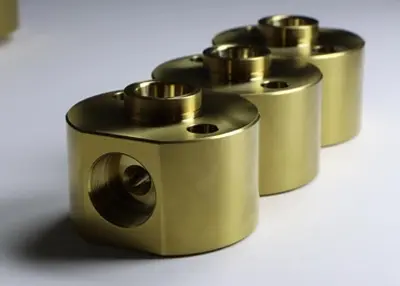 CNC Machining and 3D Printing - Friends or Foes?October 13, 2023The two technologies CNC machining and 3D printing have a major impact on many industries. But do they compete or complement each other?
Simply put, CNC machining is the inverse of 3D printing.view
CNC Machining and 3D Printing - Friends or Foes?October 13, 2023The two technologies CNC machining and 3D printing have a major impact on many industries. But do they compete or complement each other?
Simply put, CNC machining is the inverse of 3D printing.view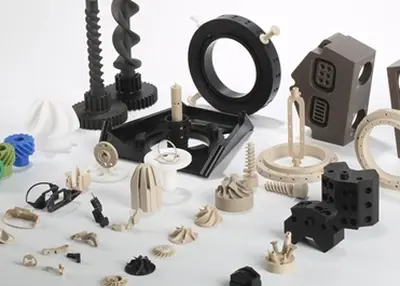 Snap Fit 101: All You Need to Know About Snap FittingSeptember 19, 2023For a better understanding of snap fitting, we will go through the various types, benefits, and applications of snap fitting and the best tips on designing snap fits.view
Snap Fit 101: All You Need to Know About Snap FittingSeptember 19, 2023For a better understanding of snap fitting, we will go through the various types, benefits, and applications of snap fitting and the best tips on designing snap fits.view Revolutionizing Automotive Manufacturing with CNC Cutting Aluminum SheetsFebruary 29, 2024The Rise of CNC Cutting in Automotive ManufacturingIn the fast-paced world of automotive manufacturing, precision and efficiency are key factors that can make or break a company's success. One tec...view
Revolutionizing Automotive Manufacturing with CNC Cutting Aluminum SheetsFebruary 29, 2024The Rise of CNC Cutting in Automotive ManufacturingIn the fast-paced world of automotive manufacturing, precision and efficiency are key factors that can make or break a company's success. One tec...view